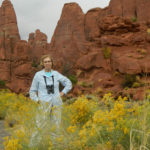According to the dictionary, “A bog is a mire that accumulates peat, a deposit of dead plant material—often mosses, and in a majority of cases, Sphagnum moss. It is one of the four main types of wetlands.” Bogs have wet, spongy ground that floats over a body of water.

Flora found in bogs is showiest in mid-summer. On a recent visit to Black Pond Bog I was rewarded with these choice beauties.
Rose pogonia Pogonia ophioglossoides
Nestled in a bed of Spagnum moss, this delicate orchid is a rare beauty. The fringed lip is a distinctive feature. Many species of Bumblebees pollinate Rose pogonia.


Purple Pitcherplant Sarracenia purpurea
The Purple Pitcherplant is the only pitcherplant native to New England. Having the unique capacity to derive nutrients from sources other than soil enable this plant to grow in poor conditions. Insects are drawn to the open “mouth” of a pitcherplant. Once inside they are blocked from leaving by downward pointing hairs. A sticky fluid breaks down the inset body and “feeds” the pitcherplant.
The genus name (Sarracenia) comes from Michael Sarrazin (1659 – 1734), who was the first botanist to suggest the pitcherplant devoured insects.
Purple pitcherplant flower

Purple pitcherplant growing in Sphagnum moss

Swamp azalea Rhododendron viscosum
Swamp azalea is a deciduous woody shrub that grows in bogs. It is upright, reaching a height of 5-8 feet. The flowers vary from white to pale pink in color. In mid-summer the flowers are fragrant giving off a spicy aroma. The leathery, dark green leaves appear before the flowers. In the fall the leaves turn a colorful yellow/orange.


Our guest blogger, Julianne Mehegan, is a wonderful friend of MABA, a birder and a naturalist.

